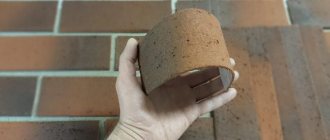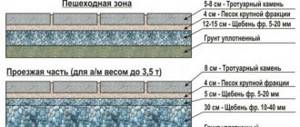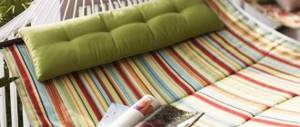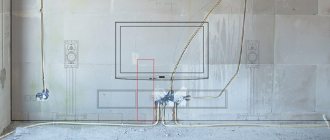When decorating the most luxurious interiors of the past, stone was very often used. This natural material looks solid and original and allows you to create stunning designs. However, natural marble, onyx, malachite or granite are not cheap, but there is also a budget option that many can now afford. You can add individuality and exclusivity to the interior by decorating the walls with artificial stone. This is an almost complete imitation of natural material, costs less, and also lasts a long time.
Advantages of the material
It is appropriate in almost any interior because it goes well with various accessories. The main thing is to choose the right project and choose the most suitable option. This can be an imitation of brickwork, marble, sandstone, granite or any other natural stone. If you don’t want to decorate the entire wall with it, then you can make a decorative insert, lining a fireplace, a niche, columns or an arch, which will allow you to create certain accents in the room.
Builders call it a universal finishing product because it can be mounted on brick and concrete, wood and metal mesh. During the production process, the compressed components are subjected to heat treatment. The result is a material of a given texture and shade. It has a flat back surface, which makes it easier to install on the wall; the edges of the blocks are geometrically correct for better joining. It is lighter than natural stone, so it does not create such a serious load on the foundation, and also requires less consumption of the adhesive mixture.
At a lower cost, it surpasses its natural analogue in color and texture. Therefore, choosing it for interior decoration is much easier, and the visual and decorative effect is amazing.
Speaking about performance characteristics, it is necessary to mention strength, since artificial stone can withstand mechanical loads and even impacts. Durability also follows from this. By covering your walls with artificial stone, you won’t have to worry about them for decades. The appearance will not change, any contamination is quite easy to clean or wash off (when choosing drugs, you should consult with specialists). Another plus is environmental safety. Artificial stone does not emit harmful substances and is non-toxic. When exposed to high temperatures, it does not melt and does not support combustion. We must not forget about external attractiveness, which is one of the main factors in design.
In addition, the cladding provides the premises with additional sound insulation, since artificial stone perfectly dampens extraneous noise.
Three main varieties:
- Firstly, porcelain stoneware, which with certain additives can imitate various types of ornamental stone: from the simplest sandstone to exquisite marble. Its basis is concrete, to which binders (including clay), crushed minerals and pigment are added. After pressing and firing, matte or glossy tiles of a given color and with the desired relief can be obtained.
- The second type is agglomerate. For its production, granite or marble chips, polyester resins and chemical additives are used. The resulting material is moisture resistant, does not depend on temperature changes, but is sensitive to chemical influences and does not tolerate direct sunlight and elevated temperatures. Therefore, it should not be used to cover fireplaces or surfaces located, for example, next to an oven.
- And finally, colored concrete. It is cheaper than the two previous materials, and in terms of service life it is not inferior to natural stone and metal. It is made from a cement-sand mixture with the addition of dyes and some fillers (the appearance of the future material depends on them). To make it stronger and use it, for example, for finishing a base, reinforcement with synthetic fibers or fiberglass is done at the manufacturing stage.
Types of decorative stone
The following types of this natural material are used in decorative finishing:
- sandstone;
- limestone;
- slate;
- marble;
- granite;
- cobblestone.
USEFUL INFORMATION: Bathroom design in white colors (24 photos)
When decorating interiors yourself, only the first two types are usually used. Sandstone lends itself well to processing and has a pleasant color palette. Limestone is very hard, so it must be purchased in cut form.
Currently, artificial decorative materials with different compositions are used much more often.
- Concrete based material. It is made from cement, sand and various additives: pigments, plasticizers, reinforcing components and natural fillers. The most common type, applicable to any surface.
- Porcelain tiles. It consists of clay, minerals, pigments, and has high strength. It looks little like natural rock, more like multi-colored glass tiles.
- Conglomerate. Made from marble and granite chips with the addition of quartz sand, limestone and dyes. It has increased strength and reliability, and is closest in appearance to natural stone.
- Acrylic. It is light in weight and comes in a variety of colors, is easy to process and does not require the use of detergents when cleaning.
- Quartz. Strong and durable material, easy to use, cut using diamond blades.
- Plaster. It is very light in weight and easy to glue. This material resembles sandstone in appearance. The main advantage of gypsum facing material is the possibility of its independent production using special molds.
Depending on the appearance, the following types of decorative stone are distinguished:
- rubble – imitates natural pebbles or boulders;
- crushed - has the appearance of unprocessed rock;
- sawn – combines an unpolished front surface with clear geometry;
- mosaic - elements form a certain geometric or color composition;
- tiled - has a polished front surface, an imitation of natural polished marble or granite.
Interior use
Agglomerates are usually chosen for finishing furniture (countertops, inserts, etc.); they are used to make bar counters and window sills, as well as shower trays. The remaining 2 options are suitable for finishing interior walls and cladding building facades, for landscape design elements or constructing small indoor fountains.
Imitation brick is perfect for a modern interior made in loft or high-tech styles. Country style with its abundance of wood accepts large segments of “wild” stone; a fireplace made of “boulders” and walls finished with material simulating cuts of untreated granite or sandstone would also be appropriate here. An arch or niche lined with a light material will fit well into a Provence style room, and plaster or light marble are suitable for reproducing a classic atmosphere.
Some people think that stone is out of place in the bedroom, but this is not true. Masonry will create the atmosphere of a country mansion, but it is better to give preference to natural colors and relief texture. This material is suitable for interiors in Mediterranean, ethnic or rustic styles. But glossy surfaces are really not entirely appropriate, because they look cold and cause anxiety. Lamps framed with artificial stone look very impressive in bedrooms.
As for the nursery, this material can help make all the kids’ fantasies come true. You can make an imitation of the stonework of an ancient castle, a corner of a “pirate cave” or an underwater kingdom. If photo wallpaper with landscapes is used in the interior, then artificial stone can serve as a kind of frame for them, creating perspective.
This material is easily drilled and polished, so it can be given various shapes, organically fitting into the chosen space. The use of high-quality dyes in its production allows it to retain its original color for many years, even under direct exposure to sunlight (with the exception of agglomerate, for which they are contraindicated).
Panels look very impressive as backdrops behind a sofa or large bed, with the backrest pushed against the wall. And, of course, porcelain stoneware or artificial marble floors look great. True, in the bedroom it is better to choose wood, but in other rooms man-made stone will be quite appropriate.
Wildlife corners in apartments and private houses are now in fashion. Artificial stone goes well with running water, untreated wood and plants climbing along the wall. In this case, deliberately rough material can be used, and somewhat chaotic masonry is allowed.
Artificial marble and granite
Such material can not only copy the color scheme of natural material. You can purchase slabs of almost any shade, which is facilitated by various coloring additives. That is, design possibilities immediately expand.
Countertops “like” marble or granite look good in the kitchen; this material is used to decorate walls and floors in bathrooms, and to line fireplaces and walls in large living rooms. The surface is shiny, perfectly smooth, and resistant to water.
Brick imitation
The brickwork itself already looks attractive, but if your apartment has concrete walls, then there is no need to cover them with real brick; it would be much better to replace it with artificial stone with the appropriate texture (at the same time you will not greatly increase the load on the walls and floor). The color scheme of the cladding can vary from white to yellow, brown and traditional red.
Decorative artificial stone for interior decoration: main characteristics
Compared to a natural sample, an artificial one has a number of advantageous advantages:
- light weight, which avoids unnecessary load on the partitions;
- simple masonry, the process is quick and manageable even for a beginner;
- reasonable cost, especially in relation to the quality of the product.
At the same time, it does not lose other positive qualities:
- environmental friendliness, the slabs contain no toxic substances, which is safe for health;
- sound insulation;
- thermal conductivity;
- a wide range of colors, shapes and types, which makes it possible to harmonize with other types of finishing coatings;
- naturalness of imitation, visually the cladding is difficult to distinguish from a natural sample;
- unpretentiousness in operation and ease of maintenance;
- durability and wear resistance, the coating will last for many years and will look like new;
- resistance to mechanical stress, strength characteristics are due to the integral solid structure throughout the entire depth of the slab;
- resistance to moisture, thanks to which cladding with this material is possible in all interior spaces.
Artificial limestone
Like its natural counterpart, the material has pores (otherwise imitation of the structure is impossible), so it is not recommended for finishing bathrooms and kitchens. But in the hallway or living room, the warm colors of this stone will be very useful. Variations of shades from “baked milk” to brown.
When can artificial stone ruin the appearance of a room?
Only if you don’t think through the finishing in advance. Trusting it to a professional designer. You will be freed from such danger. Whereas a randomly invited “jack of all trades” can make the room too gloomy and uninviting. The cladding must match the style and size of the room without overloading it. For example, in a small room, artificial stone will be good as a decorative element, but it is not recommended to decorate the entire walls with it, so as not to turn the room into something like the inside of a defensive tower in an ancient fortress.
High-quality lighting will also help to avoid the feeling of a stone bag. To prevent a hallway that has no windows from looking smaller and darker, choose a light stone with a spongy structure for wall cladding. In a small corridor, it is better to use artificial stone only for cladding the lower part of the walls; combination with decorative plaster or wallpaper will visually increase the area.
Harmony comes first
For interiors with stone cladding, it is necessary to consider combining it with other finishing materials, the texture of the ceiling and walls, baseboards and other joinery. The abundance of colors and shades of artificial material is not a reason to turn your home into a rainbow. You should not combine different types of stone in one room, but you can use one in two colors.
Artificial stone can be the main background of the walls in the hallway and bathroom, and in other rooms a decorative panel, lined columns or fireplace, arch or protruding corner would be appropriate.
The quality of the masonry is of great importance. Only in some cases is deliberate negligence appropriate; in general, the cladding must be neat, so the specialists performing it must use a plumb line and a level.
Working with decorative stone
When choosing decorative stone as a facing material, first of all you will have the following questions:
- Is it possible to carry out finishing without the participation of a specialist?
- What tools will you need during work?
- How to lay decorative stone?
- What composition can be used to glue the facing material to the wall?
- How to decorate an arch with decorative stone?
USEFUL INFORMATION: Decorative interior partitions (13 photos)
Let's find out the answers to these questions and consider each in detail.
Do-it-yourself decorative stone finishing
Finishing with decorative stone on your own is a very real task. Working with different types of this facing material has different levels of complexity, but in general, any novice master can cope with laying stone.
Required Tools
To work with decorative finishing material you will need the following set of tools:
- trowel or spatula for applying glue;
- rubber hammer;
- grinder with disc for concrete;
- container for mixing the solution;
- triangle ruler;
- cords for horizontal beacons;
- plumb lines;
- metal brush;
- roulette;
- level.
Bonding composition
The facing material can be glued to the wall using tile or silicone glue, liquid nails, or stone glue. In some cases, it is permissible to use cement-sand mortar with plasticizers or polyvinyl chloride construction adhesive.
The best choice is tile adhesive or a specialized composition for decorative stone.
Important points
When working with stone, you need to take into account several nuances, the observance of which will ensure a high-quality result.
- Decorative cladding material can only be glued onto a leveled and carefully primed wall. It is acceptable to use plaster or drywall for leveling.
- When choosing a natural facing material that has a lot of weight, you need to attach a reinforcing mesh to the wall.
- When covering walls with plasterboard, the sheets must have a thickness of at least 12.5 mm and be fixed along the length along at least three transverse lines.
- Maintaining relatively even rows improves the appearance of the finished surface.
Sketch development and marking
Before you start gluing masonry elements, you must determine the size of the area to be covered, select the type of seams, make a sketch and markings on the walls. The sketch is necessary for the reason that it is desirable to lay a solid stone on the wall, and you should try to place it so that you do not have to cut and chop it, since these actions can lead to damage.
USEFUL INFORMATION: Is it necessary to prime the walls before puttying?
After creating a sketch, you need to transfer the installation diagram to the wall and mark it using beacons. In places where there will be a smooth edge, it is necessary to secure limiters in the form of profiles or corners.
Work order
During operation, follow the following instructions.
- Before you start gluing the stone to the wall, go over the back of it with a wire brush to improve surface adhesion.
- Remove any burrs on the front side with a file.
- Apply the solution or glue to the wall with a trowel or spatula along the width of the first row, cover the back side of the stone with the composition. The glue layer should be 5-10 mm.
- You can lay the elements end-to-end by placing them against the wall, pushing them tightly against the profile and elements of the bottom row, and then adjusting them with a rubber hammer.
- To form seams, you can use wedges, lay pieces of drywall between the rows for wide seams or scraps of cardboard for narrow ones. After the glue has dried, the auxiliary materials must be removed.
- Elements in a row must be placed offset, as when creating brickwork. This is necessary for a more natural look and increased strength.
- After laying several rows, it is advisable to take a break to prevent the array from slipping.
- Finishing an arch with decorative stone involves gluing elements not only to the vertical wall, but also to the vault. For better masonry quality, tap the laid elements for possible voids. If they are found, the stone must be removed, the glue cleaned off and laid again.
- Cladding arches, doorways and finishing corners in an apartment often requires trimming the stone. Even cuts look unnatural, so using pliers, a knife and a file you need to make various chips that will give the stone that forms the opening a more natural look.
- A few days after finishing the work, you can start grouting the joints, take out the wedges and fill the joints with a special grouting solution.
Ideas and implementations
If you cannot turn your dreams and thoughts into something tangible yourself, then it is better to contact a professional designer who has experience working with artificial stone. After listening to your wishes, the specialist will create a design using modern computer technology, so you can understand whether the sketch meets your needs. If necessary, some changes can be quickly made.
A design specialist understands how best to combine different materials, how a stone of one color or another will look in your room, taking into account the size and level of lighting (both daylight coming through windows and electric light are taken into account). The project you approve is handed over to craftsmen who have long-term practical experience working with similar materials. They will properly prepare the surface for installation, and then quickly cover it with high-quality artificial stone, leaving no gaps or traces of the adhesive solution at the joints.
Work entrusted to professionals will be completed quickly and efficiently. The cladding will serve for many years, creating an original atmosphere in the premises. Correctly selected color and texture of the material will allow you to make small changes to the interior design, for example, changing furniture or textiles, without breaking out of one style or another.
Artificial stone in design is beautiful, modern, convenient and practical. A large selection of varieties of this material will give you the opportunity to let your imagination run wild. Your home will become unique, the design will evoke positive emotions and delight the eye for many years.
You won't be disappointed with your choice. Without overpaying for natural stone, the interior will be stylish and fashionable.
Types of decorative finishing stone
There are several types of this finish, differing in their characteristics and price:
- plaster;
- acrylic;
- quartz.
The most budget-friendly of them is gypsum. It does not contain toxic substances in its composition and complements the partitions with sound-proofing and heat-conducting properties. True, before purchasing such material, you should think carefully, since it is not particularly durable and is limited in its scope of application due to its poor moisture resistance.
The acrylic sample is a more expensive option. It includes the same positive qualities as gypsum, and even more, since it has good strength and moisture resistance. This makes it possible to use acrylic in the kitchen and bathroom.
Anyone who wants to get the most out of quality buys quartz finishes. In addition to the listed advantages of gypsum and acrylic, quartz cladding is not afraid of temperature influences and looks very natural. But not everyone can afford such a pleasure: quartz artificial stone is not cheap.
The stores offer samples for:
- marble;
- brick;
- granite;
- chip;
- grotto;
- slate, etc.











